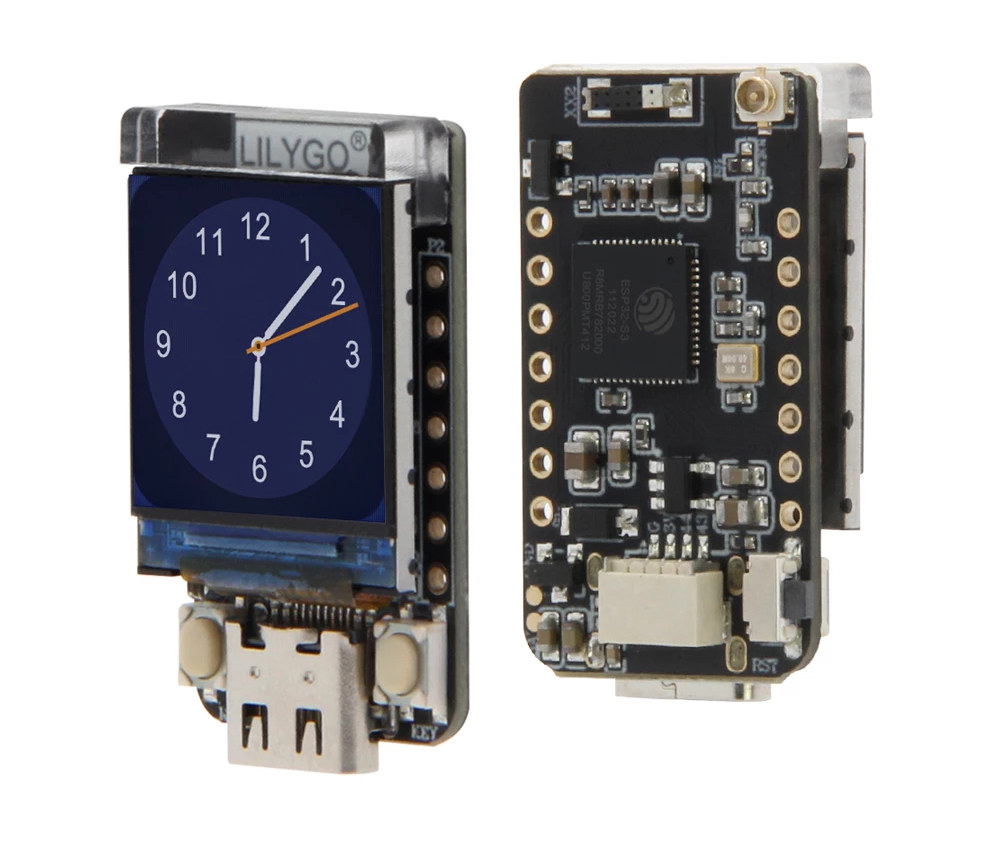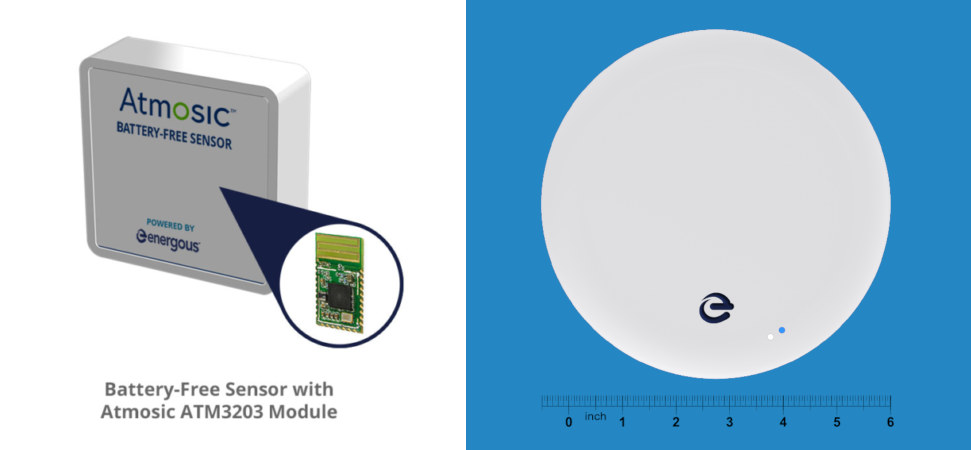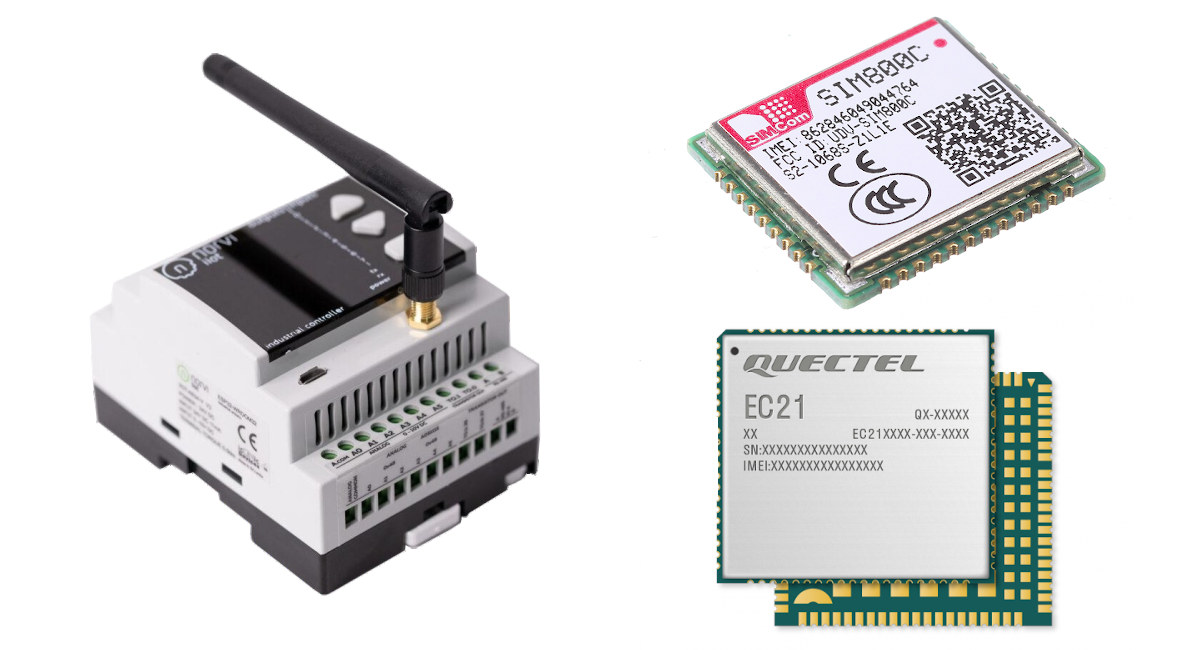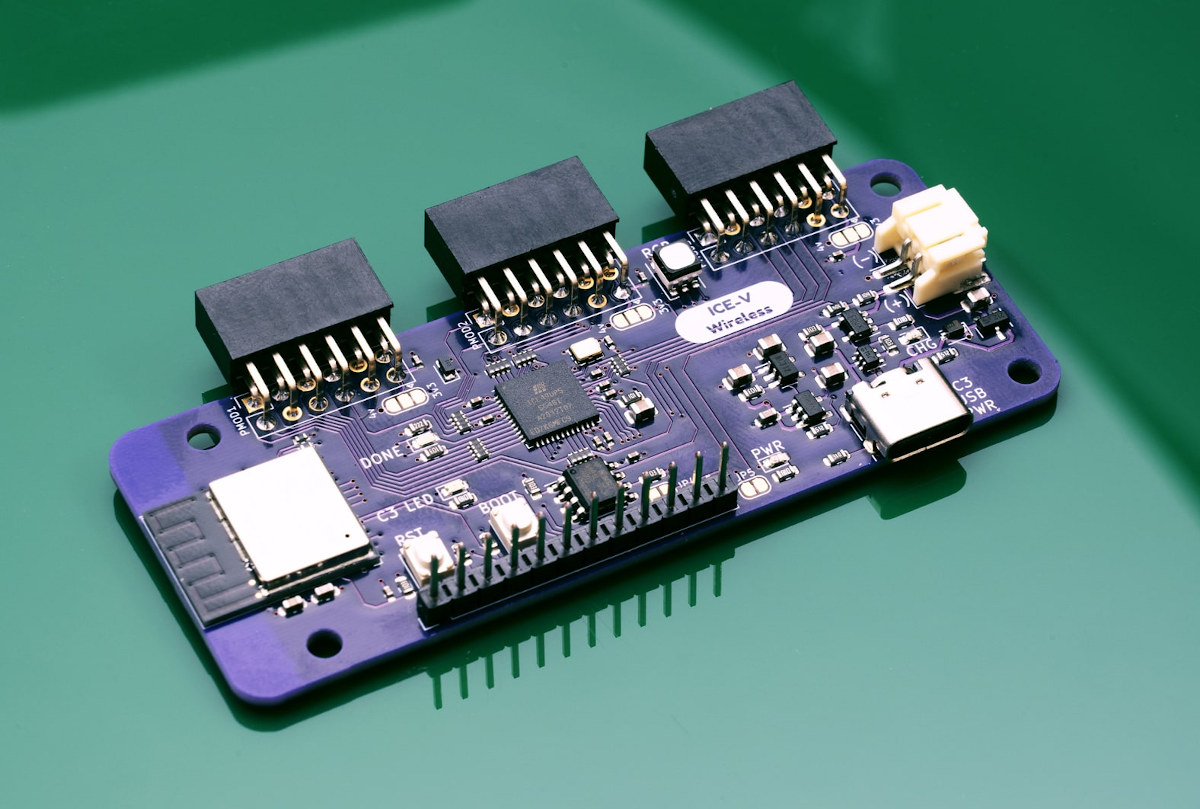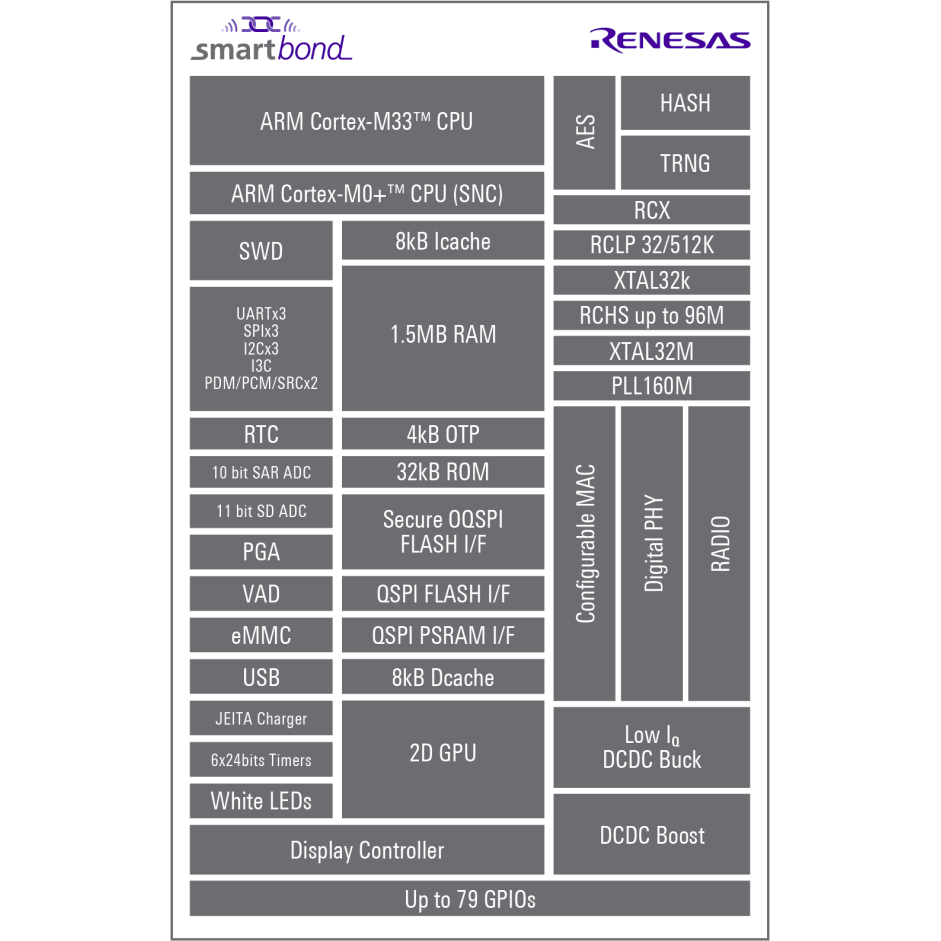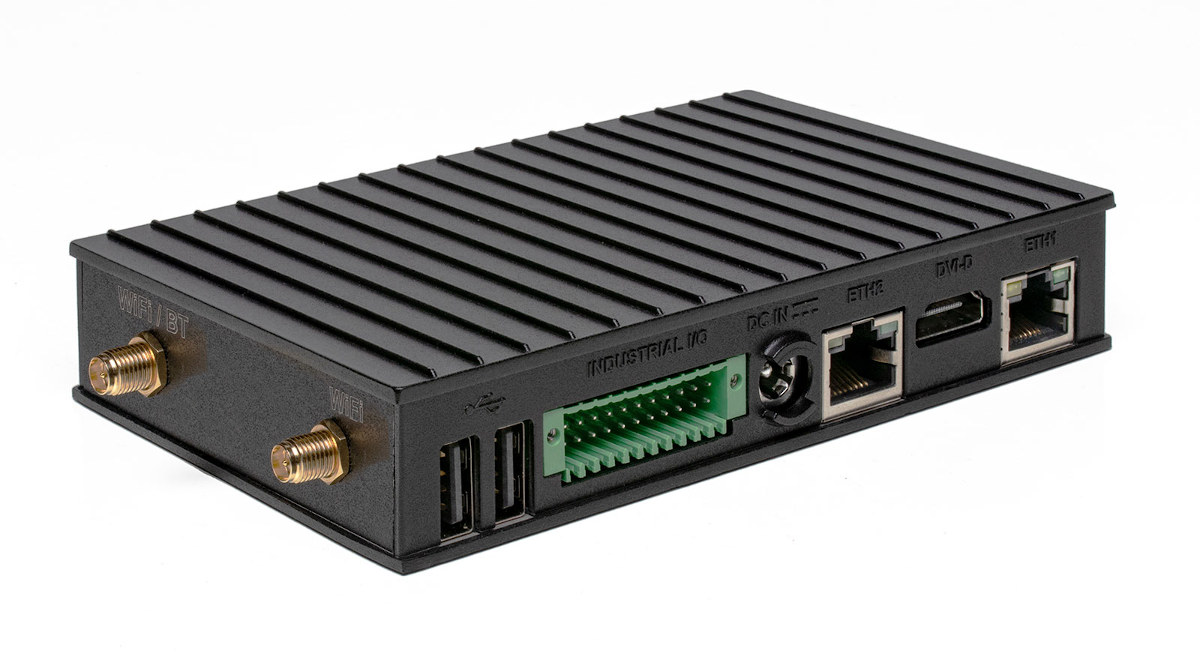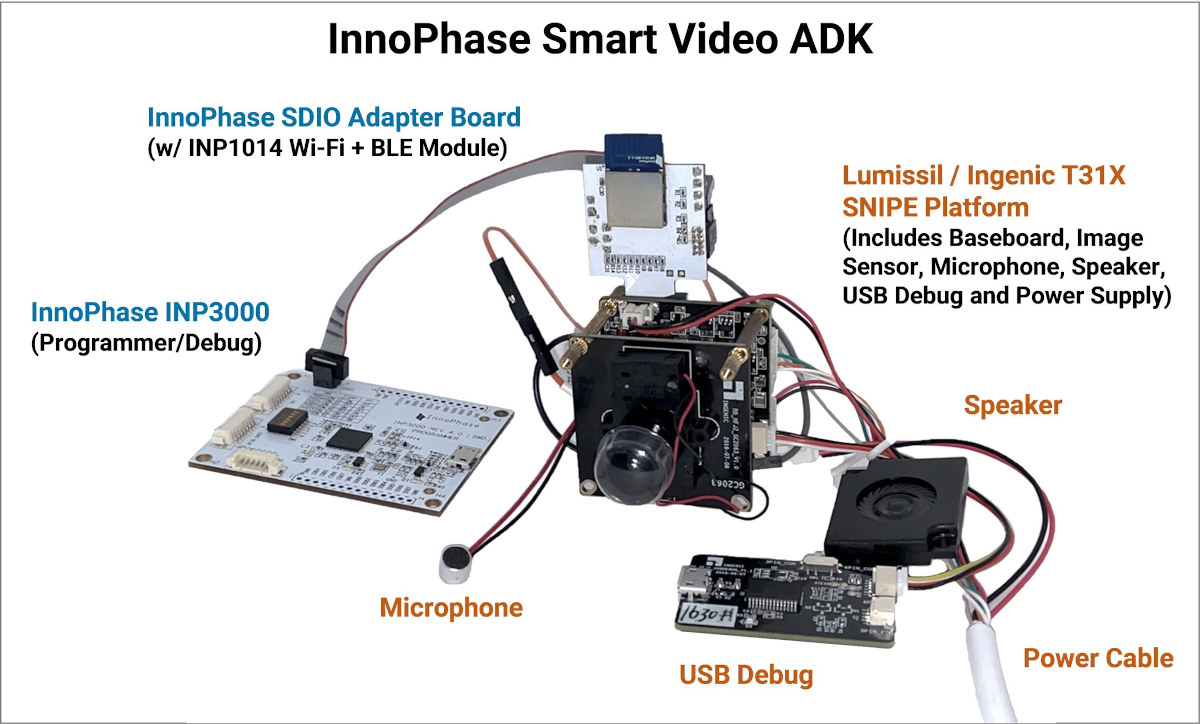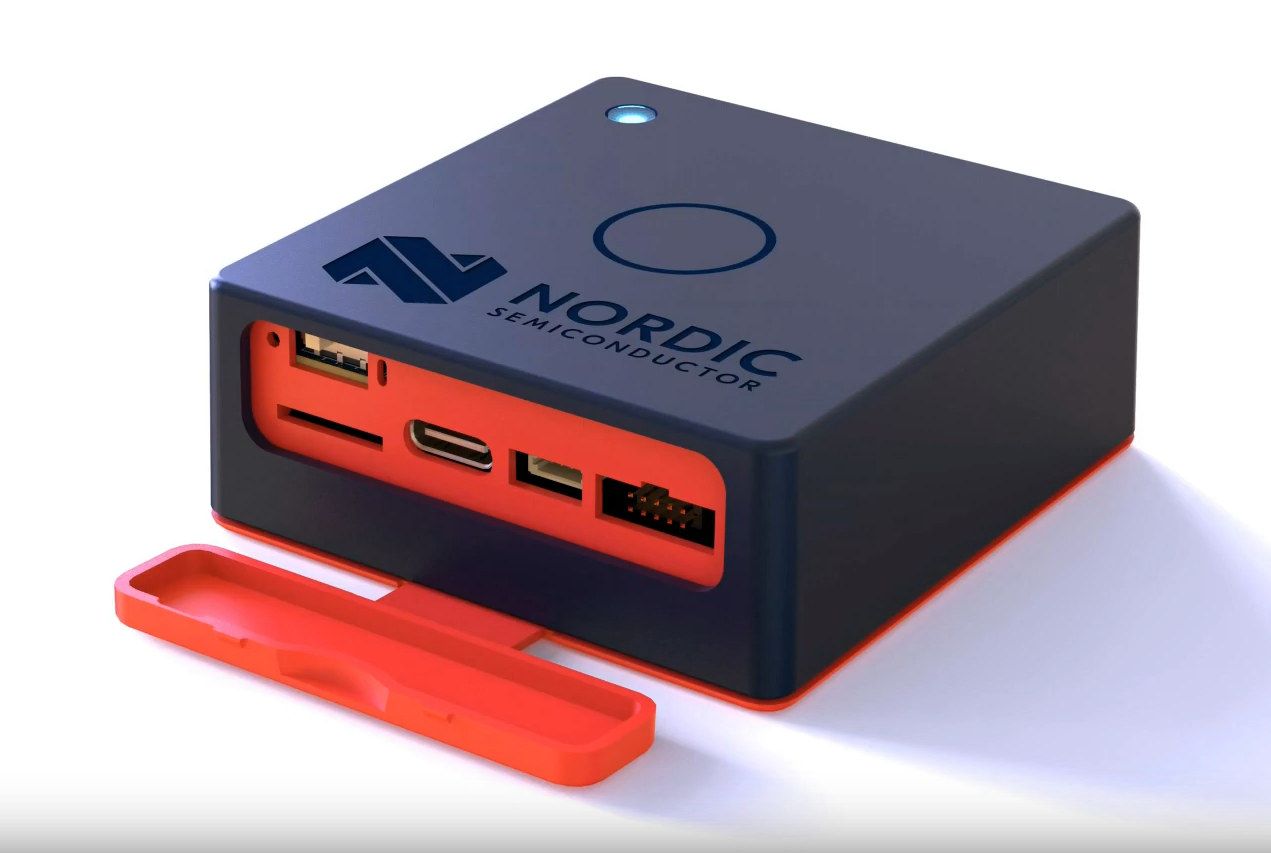LILYGO must be churning out at least one new “ESP32” board every month, but I don’t think they’ve ever made one with ESP32-S3. LILYGO T-QT V1.1 board changes that and combines the dual-core WiFi 4 and Bluetooth LE 5.0 AI microcontroller with a 0.85-inch color display. The board also happens to be rather small and cute with a 33 x 18 mm form factor, offers some I/O via headers and a 4-pin connector, and can be powered via its USB Type-C port or a battery, but lacks a charging circuit. LILYGO T-QT V1.1 specifications: Wireless MCU – Espressif Systems ESP32-S3 dual-core Tensilica LX7 @ up to 240 MHz with vector instructions for AI acceleration, 512KB RAM, wireless connectivity Storage – 8MB flash Connectivity via ESP32-S3 2.4 GHz 802.11 b/g/n Wi-Fi 4 with 40 MHz bandwidth support Bluetooth Low Energy (BLE) 5.0 connectivity with long-range support, up to 2Mbps data rate. […]
Wirelessly powered sensor evaluation kit comes 1W power transmitter, two battery-free sensors
Energous WattUp wireless power technology delivers power at various ranges (up to a few meters), and so far, we’ve seen it in wearables like garments, as well as smart glasses and earbuds development kits. The company has now launched a wirelessly powered sensor evaluation kit for the Internet-of-Things (IoT) based on the 1W WattUp PowerBridge transmitter with Bluetooth LE 5.0, plus two battery-free sensor nodes based on Atmosic ATM3202 Bluetooth LE 5.0 Cortex-M0 microcontroller with energy-harvesting capabilities. Wirelessly powered sensor evaluation kit content & features: 1W WattUp PowerBridge transmitter Bluetooth LE microcontroller Energous EN4100 transmitter IC Energous EN3210 power amplifier 2x Atmosic battery-free sensors MCU – Atmosic ATM3202 Cortex-M0 microcontroller @ 16 MHz with integrated RF energy-harvesting using MPPT (maximum power point tracking) algorithm to maximize harvesting performance Sensors – Temperature & humidity sensor, 3-axis accelerator Power consumption – A 1/4th of the power consumption of a typical BLE beacon […]
NORVI GSM industrial controller with WiFi and cellular connectivity supports Arduino or ESP-IDF programming
We’ve already seen ESP32 WiFI & Bluetooth SoC combined with a cellular modem several times already, and a couple of days ago, I wrote about LILYGO T-A7068X ESP23 board with a 4G LTE modem. Iconic Devices team has made another cellular ESP32 product with the NORVI GSM industrial controller. The DIN-Rail mountable USB programmable controller is offered with a choice of SIMCOM SIM800L 2G-only modem or QUECTEL EC21-G modem adding 3G UMTS/HSPDA+ and 4G LTE cellular connectivity. It also offers Ethernet connectivity, digital and analog inputs, relay outputs, and a small 0.96-inch OLED information display with options varying depending on the exact model. NORVI GSM specifications: Main module – ESP32-WROOM-32 with ESP32-D0WDQ6 dual-core microcontroller @ up to 160 MHz with 520 KB SRAM, 4 MB flash, 2.4 GHz WiFi 4 and Bluetooth 4.2 connectivity Cellular module (one or the other) SIMCom SIM800L quad-band GSM/GPRS module Quectel E21-G worldwide 4G LTE, […]
ICE-V Wireless FPGA board combines Lattice Semi iCE40 UltraPlus with WiFi & BLE module
Lattice Semi ICE40 boards are pretty popular notably thanks to the availability of open-source tools. ICE-V Wireless is another ICE40 UltraPlus FPGA board that also adds wireless support through an ESP32-C3-MINI-1 module with WiFi 4 and Bluetooth LE connectivity. Designed by QWERTY Embedded Design, the board also comes with 8MB PSRAM, offers three PMOD expansion connectors, plus a header for GPIOs, and supports power from USB or a LiPo battery (charging circuit included). ICE-V Wireless specifications: FPGA – Lattice Semi ICE40UP5K-SG48 FPGA with 5280 LUTs, 120 Kbits EBR RAM, 1024 Kbits PSRAM External RAM – 8MB PSRAM Wireless – ESP32-C3-MINI-1 module with 2.4 GHz WiFi 4 and Bluetooth LE through ESP32-C3 RISC-V processor, 4MB flash. USB – 1x USB Type-C port for power, programming, and JTAG debugging of the ESP32-C3 module Expansions 3x PMOD connectors connected to the FPGA I/O connector with 7x ESP32-C3 GPIO lines (serial, ADC, I2C) and […]
Renesas SmartBond DA1470x Bluetooth 5.2 LE SoC features a 2D GPU
I would not usually ask myself “is there a GPU?” in a Bluetooth LE SoC, but that’s exactly what Renesas SmartBond DA1470x Bluetooth 5.2 LE microcontroller offers with a 2D GPU used to accelerate the rendering of user interfaces in wearables, healthcare devices, home appliances with displays, industrial automation and security systems, as well as consoles in e-bikes and gaming equipment. The DA1470x also comes with a Cortex-M33 application core, a Cortex-M0+ sensor node controller, 1.5MB SRAM, and an ultra-low-power hardware VAD for always-on audio processing, as well as various peripherals. Specifications: CPU cores Arm Cortex-M33 core @ up to 160 MHz for the application Arm Cortex-M0+ core acting as a sensor node controller (SNC) GPU – 2D GPU for advanced graphics processing Memory – 1.5MB SRAM Storage 4 kB OTG, 32KB ROM on-chip Decrypt-on-the-fly Octa/Quad SPI flash interface Dedicated QSPI PSRAM and QSPI flash interfaces eMMC interface supporting up […]
Arm Linux IoT gateway ships with up to 8GB RAM, offers dual GbE, 4G LTE, WiFi 6, BLE 5.3, GNSS connectivity
Compulab IOT-GATE-IMX8PLUS is a new Arm Linux IoT gateway powered by NXP i.MX 8M Plus SoC with up to 8GB RAM, 128GB storage, and plenty of connectivity options with dual Gigabit Ethernet, WiFi 6, Bluetooth 5.3 LE, and 4G LTE connectivity, as well as GNNS support and RS485/RS232 interfaces. The new IoT gateway builds upon theArm SystemReady IR certified IOT-GATE-IMX8 industrial gateway, but offers more RAM and storage, a 2.8 TOPS AI accelerator (in the NXP processor), improved connectivity, as well as a DVI-D port for video output. Compulab IOT-GATE-IMX8PLUS specifications: SoC – NXP i.MX8M Plus Quad or Quad-lite quad-core Arm Cortex-A53 processor @ up to 1.8 GHz with Arm Cortex-M7 real-time core @ 800 MHz, Vivante GC7000UL 3D GPU, Vivante GC520L 2D GPU, 1080p H.265/H.264 video decoder & encoder, HiFi 4 DSP, 2.3 TOPS Neural Processing Unit (NPU) System Memory – 1GB to 8GB LPDDR4 Storage – 16GB to […]
Ingenic T31-based WiFi AI camera development kit promises over a year of battery life
We’ve previously seen WiFi security cameras promising a year of battery life with products like the Eufy EverCam, but the Ingenic T31-based Smart Video Application Development Kit by Innophase may allow for the development of even more power-efficient WiFi AI security cameras with AI processing last can last over one year. The development kit combines Ingenic T31 MIPS & RISC-V camera SoC with Innophase Talaria TWO INP101x ultra-low-power (57µA @ DTIM10) Wi-Fi & BLE wireless module, that is estimated to last 14.4 months on a 3,000 mAh battery while operating at a 99.3% idle, 0.7% video capture ratio. Development kit content: Board with Ingenic T31 MIPS processor @ 1.5 GHz and RISC-V low-power core, H.265 encoder, 512Mbit or 1Gbit on-chip memory fitted with 2M pixel Full-HD camera @ 30fps USB Debug board Microphone and speaker InnoPhase Talaria TWO SDIO Adapter Board Fitted with INP1014 LGA module with 2.4GHz WiFi 4, […]
Nordic Thingy:53 is a dual-core Arm Cortex-M33 platform for IoT prototyping
As one should have expected after Nordic Thingy:52 and Thingy:91 IoT devkits were introduced in 2017 and 2019 respectively, the Norwegian company has now launched the Thingy:53 platform based on Nordic Semi nRF5340 dual-core Arm Cortex-M33 SoC for IoT prototyping with Bluetooth Low Energy, Thread, Matter, Zigbee, IEEE 802.15.4, NFC, and Bluetooth mesh RF protocols. The development kit also incorporates the nPM1100 PMIC and nRF21540 Front End Module (FEM), a power amplifier/low noise amplifier (PA/LNA) range extender, as well as multiple motion and environmental sensors, as well as a rechargeable 1350 mAh Li-Po battery for power. Nordic Thingy:53 specifications: SoC – Nordic Semi nRF5340 SoC with 128 MHz Arm Cortex-M33 Application core with 1 MB Flash + 512 KB RAM, and a 64 MHz Arm Cortex-M33 Network core with 256 KB Flash + 64 KB RAM Wireless connectivity RF front-end nRF21540 FEM Protocols – Bluetooth LE, Bluetooth Mesh, NFC, Thread/Zigbee, […]


